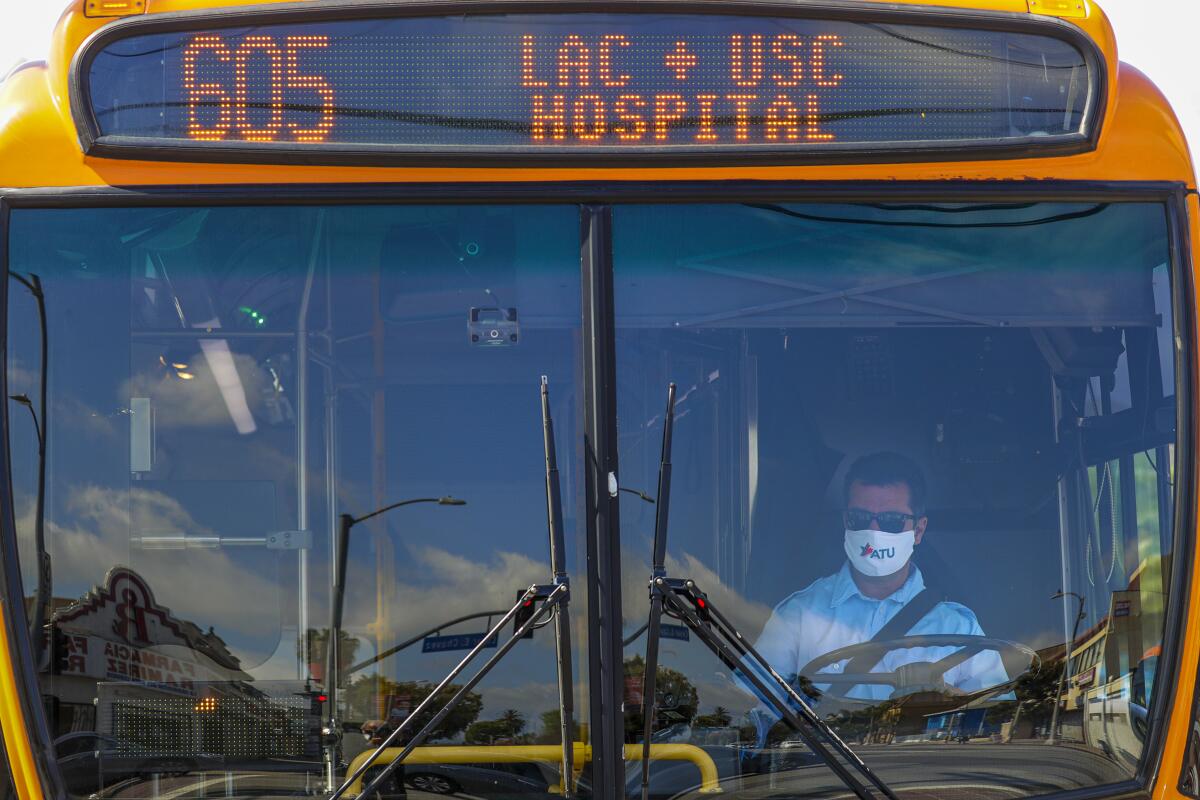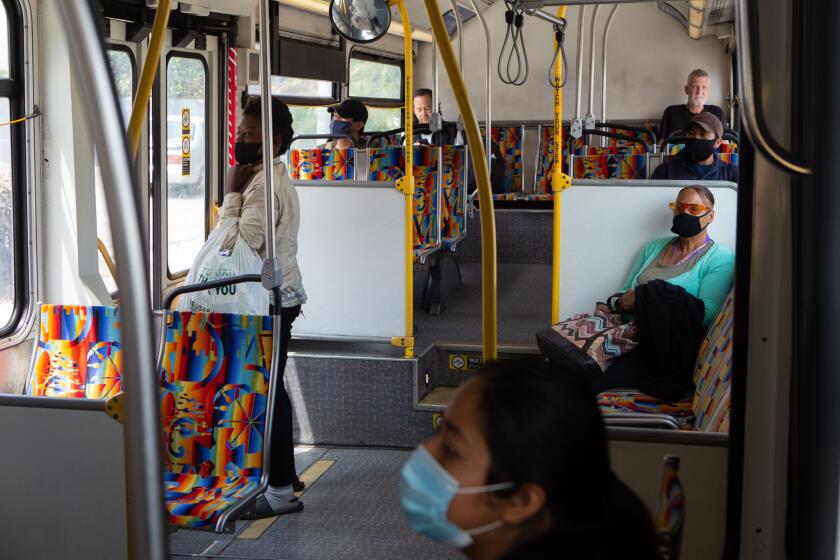Metro is shortchanging L.A.’s bus riders and bus drivers

- Share via
The Los Angeles County Metropolitan Transportation Authority’s plan to transform the region’s beleaguered buses into a “world-class system” with frequent, reliable service has been hampered by a big problem — a crippling bus driver shortage.
Metro has been losing bus operators more quickly than it can hire them. Retirements and resignations, a hiring freeze during the COVID-19 pandemic and dismally low starting pay have all resulted in a driver shortage so severe the agency had to cut service by 12% earlier this year because there weren’t enough operators to run the buses on reliable schedules. Metro currently has 3,300 drivers and needs to hire 600 more to be back at the pre-COVID-19 staffing level.
Metro isn’t the only agency scrambling to hire bus drivers. It’s a national problem fueled by a tight labor market and demand for commercial drivers; workers can earn more and have more flexibility driving for delivery services.
But the bus driver shortage in Los Angeles has undermined the implementation of Metro’s NextGen bus system, which was the first overhaul of the network in 25 years. NextGen created a series of schedule and route changes that was supposed to result in fast, frequent and reliable service, providing 80% of current bus riders with 10-minute or better frequency of bus arrivals.
Metro has begun to roll out a new plan for speedier buses. But it will only work if there’s political will behind it.
It was also supposed to address historical inequities in transit service by providing communities of color and high-needs communities with better transportation options to jobs, hospitals and colleges, an analysis from the nonprofit TransitCenter shows. Instead, the disruption caused by the bus operator shortage has left riders with significantly worse service than they were promised. Indeed, bus service is at the lowest point since the 1990s, according to data from the advocacy group Investing in Place.
And while the pandemic worsened the bus driver shortage, it was a problem even before 2020 because of the difficult working conditions and the shockingly low starting pay. As recently as the beginning of the year, newly hired bus drivers were paid $17.75 an hour. After six months, their pay increased by $2 an hour. In April, Metro temporarily increased starting pay to $20.49 an hour; drivers initially work part-time after training, and their pay increases to $21.84 an hour when they go full-time.
While veteran full-time bus operators can earn more than $100,000 a year, the pay for new drivers is so low they would qualify for low-income housing. It’s no wonder Metro is struggling to hire and retain workers. More than half of bus drivers surveyed said they are inclined to leave Metro, citing as key reasons low pay and high stress from dealing with safety concerns along with lack of breaks and bathrooms on their routes.
Metro cannot restore or improve bus service until the agency hires and trains more drivers. The agency has ramped up hiring and training, with the goal of having enough drivers to return to pre-pandemic bus service levels by the end of September, Chief Executive Stephanie Wiggins said. It’s negotiating a new contract with the union representing bus operators, though officials declined to talk about proposals to help with recruitment.
Despite GOP concerns about pandemic spending, the U.S. hasn’t spent enough to protect essential public services, including public transit.
The bus driver shortage isn’t the only cause for concern, however. The NextGen plan adopted by Metro’s board of directors in January 2020 called for the agency to spend $1 billion over five years to improve bus reliability, speed and comfort. That was supposed to include bus-only lanes, synchronized traffic signals and other improvements, such as shelters at busy stops.
But now the agency has slashed the amount it plans to spend on bus infrastructure to just $350 million. Wiggins said the agency can get the same results with less money. But there’s good reason to be skeptical of the agency’s motivation. Buses carry two-thirds of the system’s riders, yet buses have been treated as an afterthought compared with big, flashy highway and rail construction projects. NextGen was supposed to bring a building boom of bus infrastructure, including dedicated lanes that are crucial for faster service on congested city streets. But bus lanes are controversial (car drivers don’t want to lose street space) and expensive, and now the agency is reconsidering the breadth of its bus lane network.
Riders shouldn’t have to keep settling for less. Metro, and the political leaders overseeing the agency — including L.A.’s mayor — shouldn’t back away from the ambitious plans behind NextGen, no matter the challenges.
More to Read
A cure for the common opinion
Get thought-provoking perspectives with our weekly newsletter.
You may occasionally receive promotional content from the Los Angeles Times.











